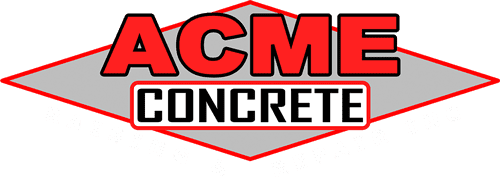Concrete leveling is the process of restoring the original position of sunken or uneven concrete surfaces. This method is used to restore the appearance and functionality of concrete structures such as porches, pool decks, driveways, walkways, and patios. In order to level concrete, a fluid mixture is injected beneath the surface in order to raise it. In this guide, you will learn everything you need to know about concrete leveling and the various techniques used to accomplish it.
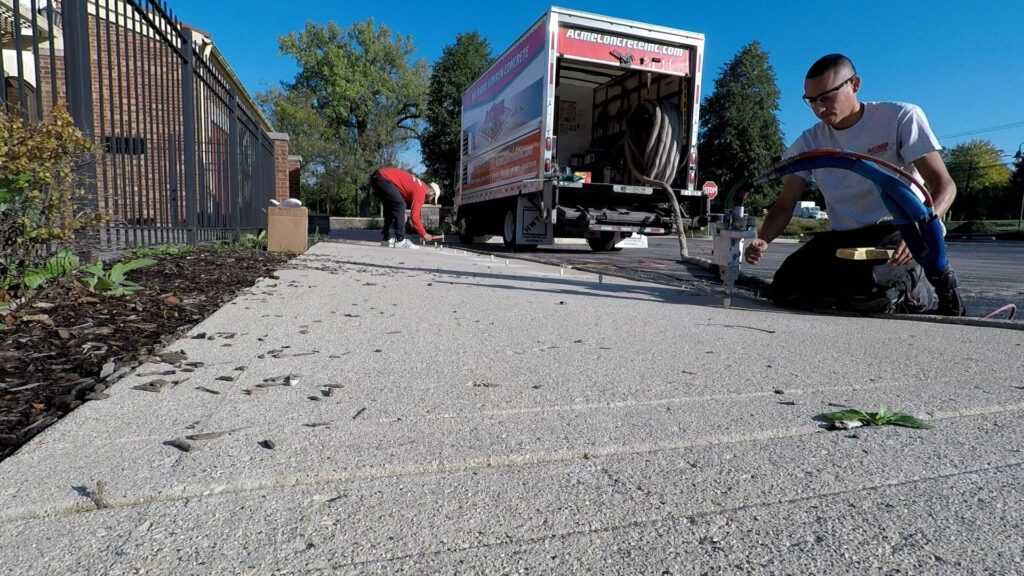
The Reasons Behind Sunken Concrete
There are a variety of reasons why concrete surfaces can sink. Soil erosion, poor compaction, and weather fluctuations are among the most frequent causes. As the soil is washed away by erosion, concrete surfaces can sink due to the lack of support beneath the concrete. Inadequate materials and improper compaction during construction can also lead to sunken concrete. This is because a loose subbase can settle and shift beneath the concrete. Changes in temperature, such as freeze-thaw cycles, can also cause concrete surfaces to sink. When water penetrates the soil beneath the concrete, the water can freeze and expand, causing the soil to shift and the concrete to sink. Changes in soil moisture due to flooding or drought can also cause slabs to shift as the ground expands or contracts.
Concrete Leveling Methodologies
There are a variety of concrete leveling techniques, each with their own advantages and disadvantages. Mudjacking and polyurethane foam injection are the most commonly employed methods. Nonetheless, it is noteworthy that the polyurethane foam injection method is rapidly replacing older techniques, such as mudjacking. Numerous municipal, commercial, and Department of Transportation projects now require polyurethane. Mudjacking is prohibited on such engineered projects, even if cement is used as the mudjacking slurry.
Mudjacking
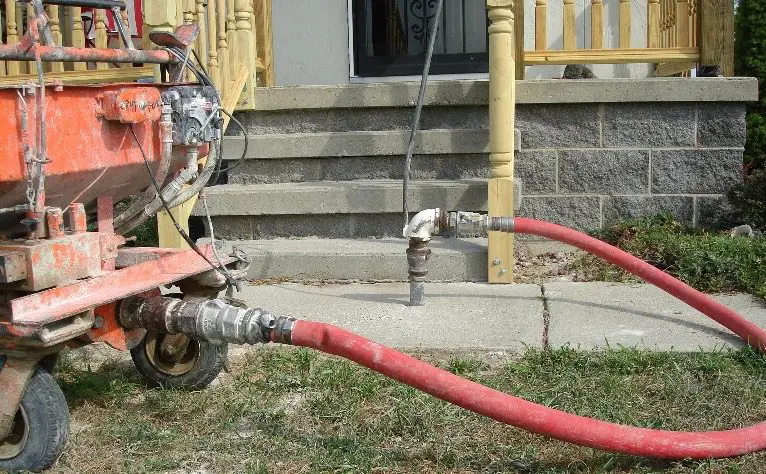
For many years, mudjacking has been utilized to level concrete. In this technique, a mixture of soil, sand, and potentially cement is pumped beneath the sunken concrete through large holes surface in order to raise it. The mixture is pumped at high pressure, allowing it to flow beneath the concrete and raise it. The primary benefit of mudjacking is its affordability. However, the mixture used for mudjacking is affected by water. Mudjacking materials can soften, settle, or erode over time, which results in the concrete surface sinking again in the future.
Polyurethane Foam Injection
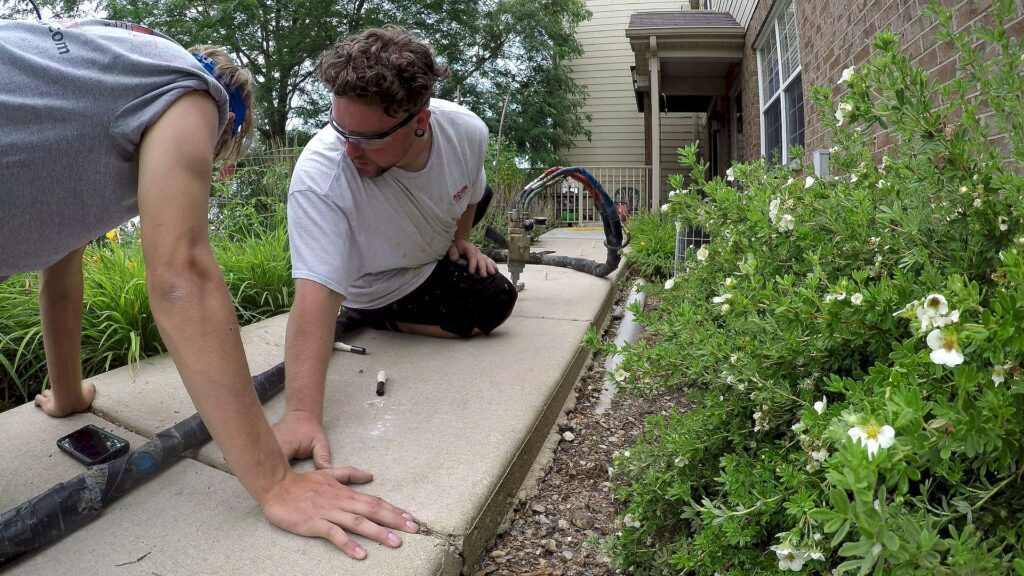
Polyurethane foam injection is a more modern method for concrete leveling that utilizes a structural foam to raise concrete surfaces. Even though injection of polyurethane foam is a more recently developed technique than mudjacking, it has been used since the 1980s to raise and stabilize slabs. In fact, the polyurethane foam raising technique was originally developed and patented for use on large infrastructure projects. The foam mixture is injected as a liquid beneath the surface of the concrete, where it spreads and expands to fill voids and lift the concrete. A major benefit of polyurethane foam injection is that it is a faster, less invasive, and more effective technique than mudjacking. Polyurethane foam is completely water resistant, lighter, and more durable than the mixture used in mudjacking, making it the superior long-term solution.
The Advantages of Leveling Concrete
Homeowners, businesses, and municipalities benefit from concrete leveling in several ways. Some examples include the following:
- Concrete leveling can restore the appearance of sunken or uneven slabs of concrete, making them structurally sound again.
- Concrete leveling can return the functionality of concrete structures, making them safe and functional.
- By restoring the functionality of your concrete, concrete leveling increases your property’s value.
- In most cases, concrete leveling is a cost-effective method for repairing sunken or uneven concrete surfaces when compared to the expense and inconvenience of replacing concrete.
The Five most typical limitations of concrete leveling
Things do not always go according to plan on construction projects. This is especially true if you are attempting to fix something without understanding how it was constructed in the first place. Concrete raising is not always a viable solution to a problem. Here is a list of restrictions and things that can go wrong during or after a concrete leveling project:
- Cracking the Slab: Despite the fact that a tremendous amount of force is required to lift a concrete slab, slabs typically do not break when being lifted. Nonetheless, if the slab is bound up against another structure, the additional resistance may result in cracking. Inexperienced contractors who apply pressure in the wrong areas can also cause a slab to crack.
- Worsening Existing Cracks: There may be “hairline cracks” in sunken slabs that are not visible prior to the slabs’ raising. These cracks may become misaligned and grow larger when the slab is raised. The greatest contractor’s care and skill are not always sufficient to prevent this from occurring. Some cracked concrete surfaces cannot be raised. Replacement is the better option in these situations.
- Subgrade Weakness: Mudjacking is ineffective in addressing subgrade issues. In fact, by adding weight to a compromised area, mudjacking can exacerbate sinking. Standard polyurethane slab raising can be used to solidify subgrade, but in extreme cases it may be necessary to employ deep polyurethane injection technology.
- Extreme Settlement: In addition to causing concrete to sink, severe erosion of surrounding areas may render concrete raising impractical as a repair method. In addition to replacing the concrete surfaces, adding soils and regrading may be required. New concrete should have a sub base that has been properly installed and compacted, and regrading work should cause rainwater to drain away from concrete surfaces.
Selecting a Concrete Leveling Company
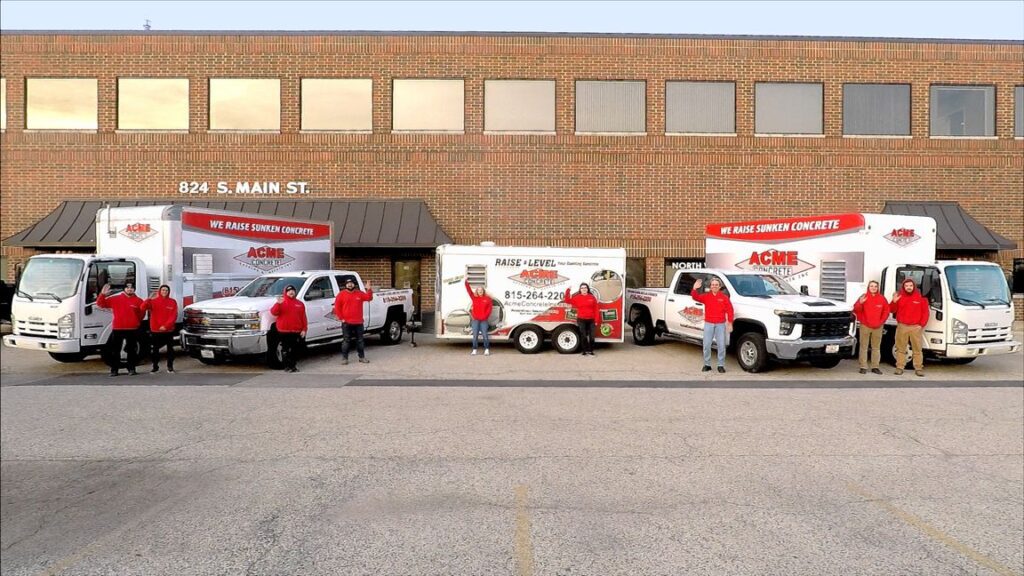
Several factors must be considered when selecting a concrete leveling company. Among the most essential are:
Specialization: It is important to choose a company that specializes in concrete leveling and has a track record of successful projects. Be wary of multi-service providers who spread their expertise across multiple service offerings. It is preferable to trust a company that excels in a single area as opposed to one that is “okay” at several.
Equipment: The company should possess current technology, including modern equipment, tools, and materials to perform the task effectively and efficiently.
Certification and insurance: The company should be certified and insured to protect you and your property in the event of an accident or damage.
Cost: The cost of the repair is an essential factor to consider, but it should not be the primary factor. Choosing the option with the lowest price tag will frequently result in a greater expense in the future because of premature failure of the work performed. It is important to choose a company that offers high-quality work at a reasonable price.
Concrete Leveling in the Future
The concrete leveling industry is expanding and will continue to do so in the future. We anticipate that polyurethane will continue to dominate concrete leveling projects as a result of technological advancements and the creation of new materials. Polyurethane foam concrete raising results in improved and more effective methods for repairing sunken and uneven concrete surfaces.
Conclusion
Concrete leveling is the process of restoring sunken or uneven concrete surfaces to their original grade and pitch. There are a variety of concrete leveling techniques, each with their own advantages and disadvantages. The advantages of polyurethane concrete leveling include, durability, improved appearance, increased functionality, increased property value, and affordability. When selecting a concrete leveling company, it is essential to consider experience, equipment, certifications, insurance, and price. With technological advances and the development of new materials, the future of concrete leveling is promising. If you require concrete leveling services, you should consider hiring a professional and experienced concrete leveling specialist for the best results.
